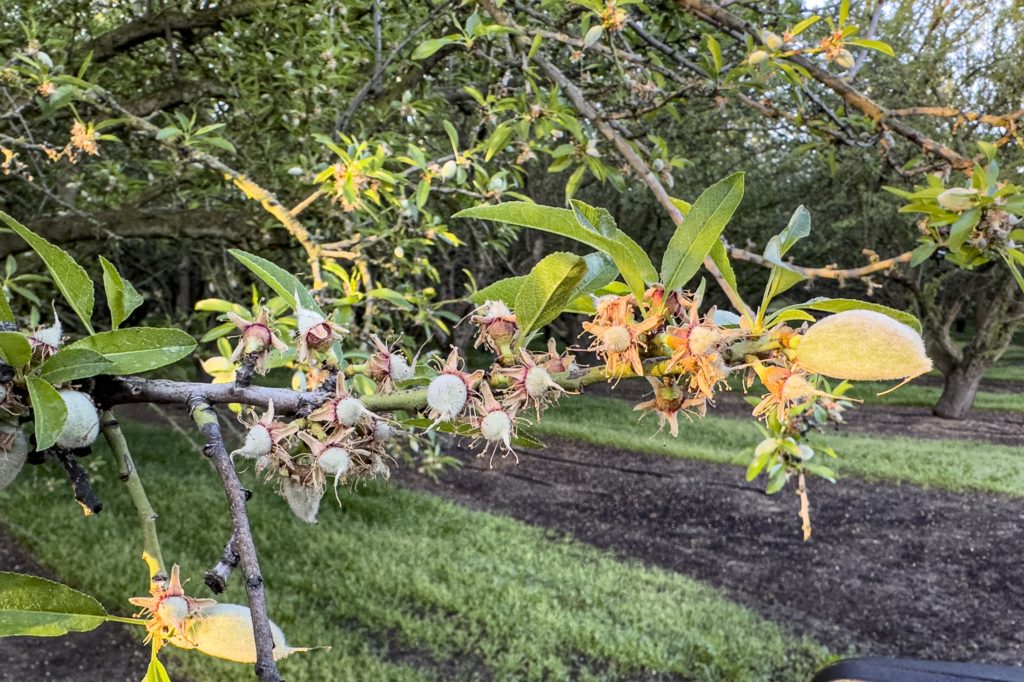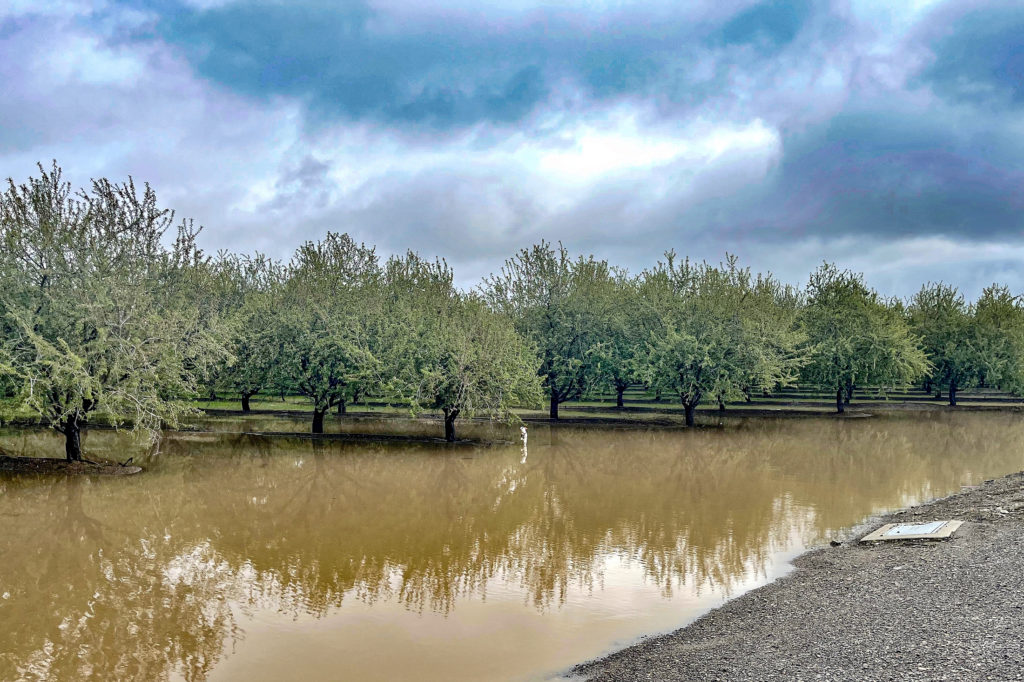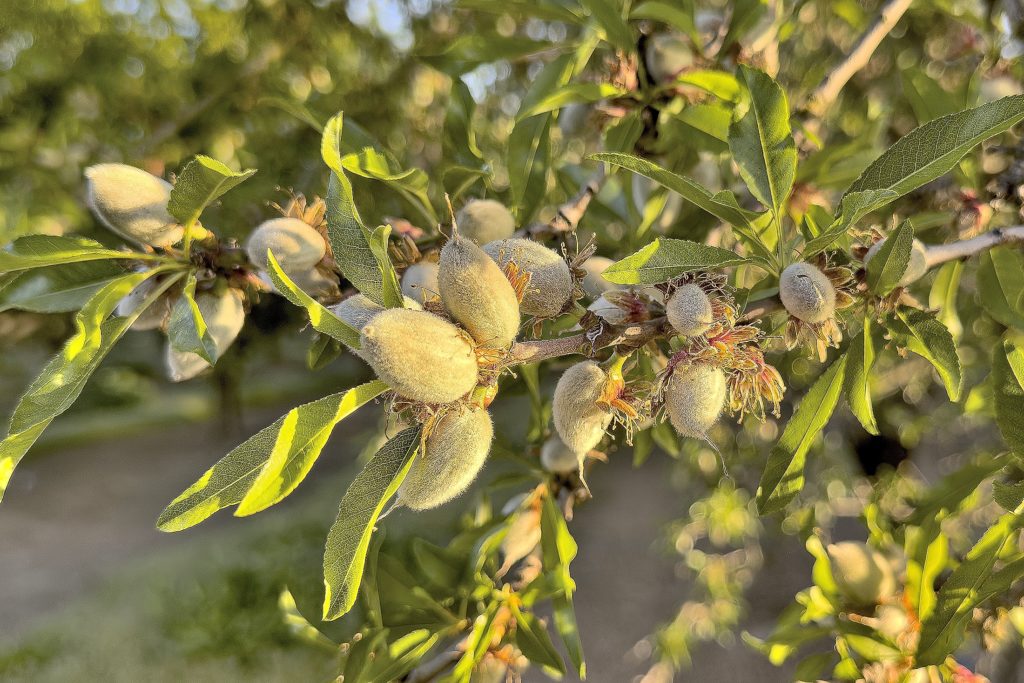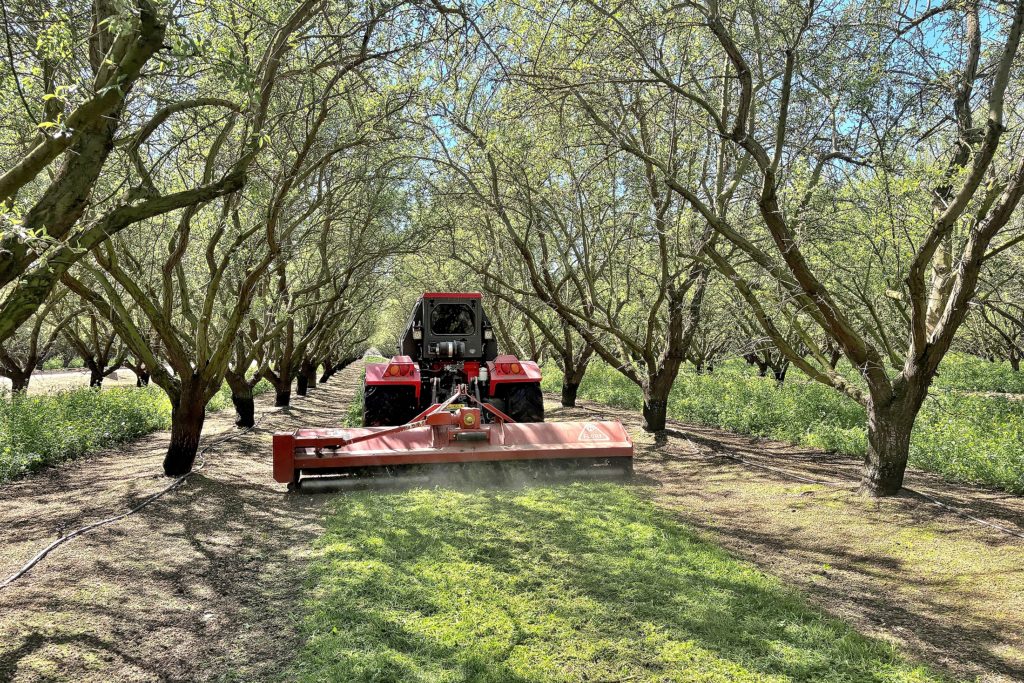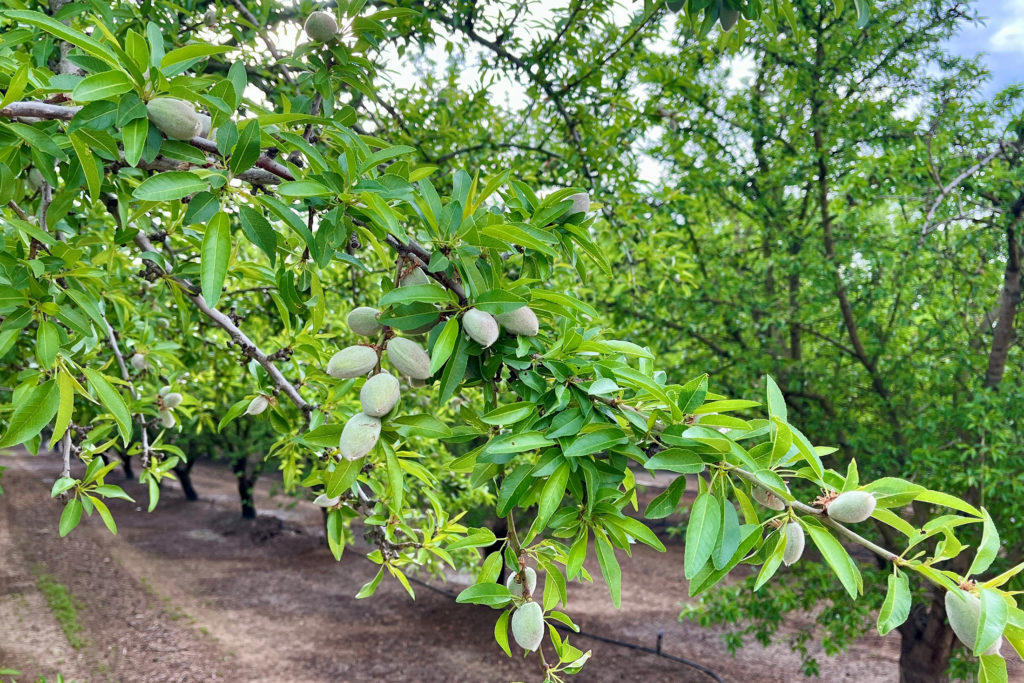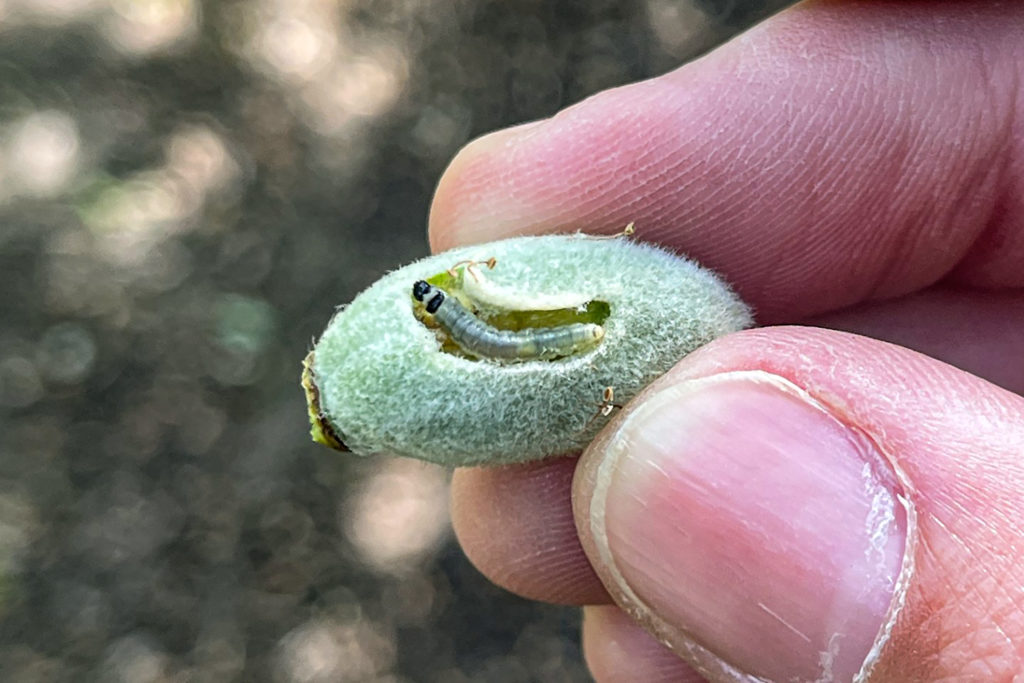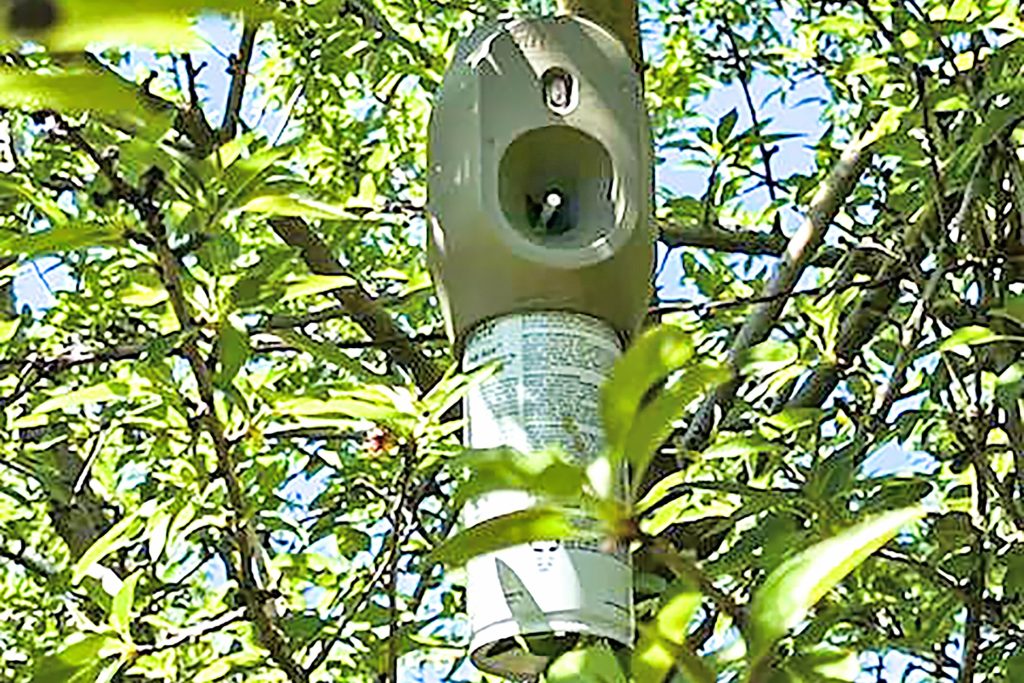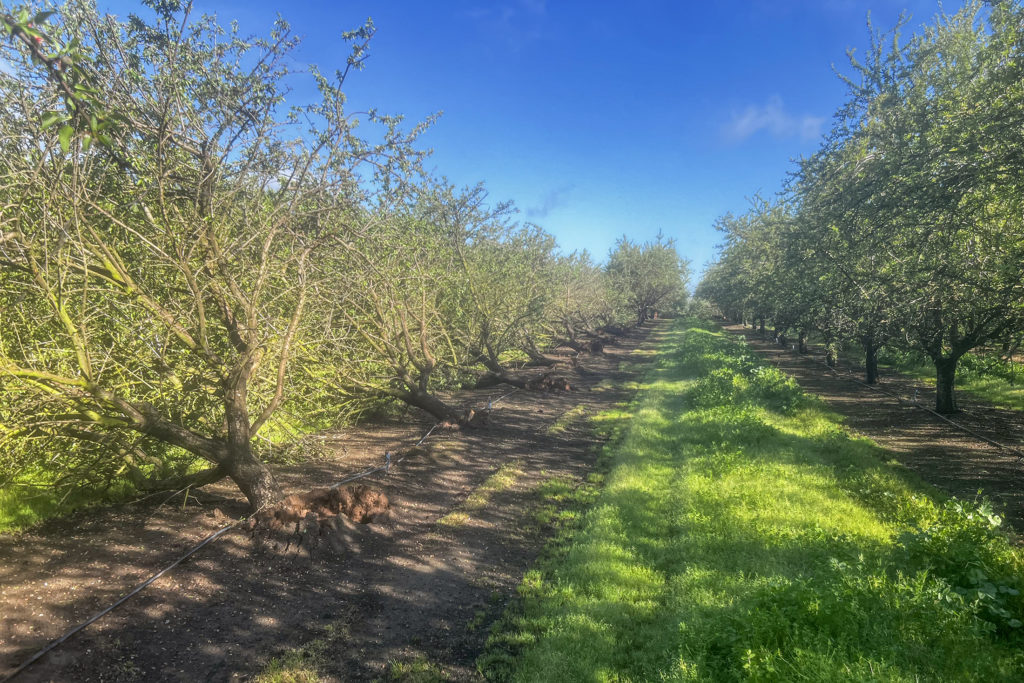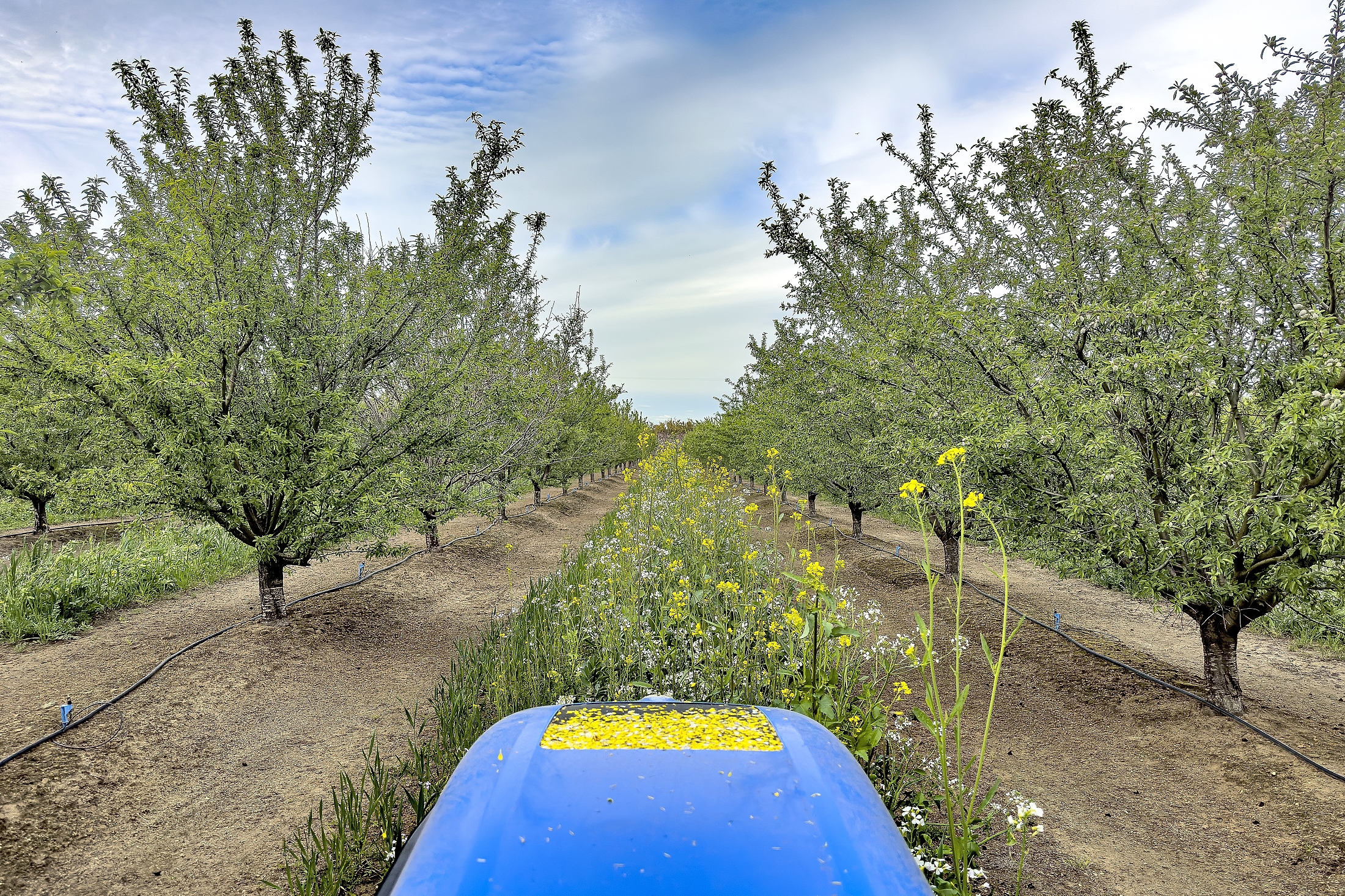
This report covers the conditions and activities observed from March 10 to March 30, 2025. The next report is scheduled for Monday, April 28, 2025. In the event of any significant occurrences prior to that date, this site will be updated as soon as possible.
The post-bloom period of March delivered a wide range of weather conditions to the central valley, with several significant storm events alternating with near record setting temperatures. Daily maximum temperatures ranged from the upper 50’s to upper 60’s for much of the period. However, readings dipped into the lower 50’s briefly on the 14th and again on the 31st as cold storm systems passed over the state. In stark contrast, daily highs peaked at near record levels between the 23rd and 25th, reaching into the mid 80’s in all areas of the valley. Morning lows followed a similar pattern, with readings widely reported between the mid 30’s on the coldest mornings and upper 40’s as temperatures peaked.
The most significant factor in the period’s weather was measured by the strength of the weather systems that passed over the valley. The broad nature of these storms produced rainfall in all areas, with official totals ranging from 0.54 to 2.5 inches. Most significantly, hail was reported on multiple days, in nearly all counties. As may be seen in the photos accompanying this report, damage was observed in orchards that received the most significant hail. One particularly virulent storm cell over eastern Stanislaus County also produced a tornado that toppled trees east of the community of Denair.
The unsettled weather during the latter half of March has provided less than optimal conditions for development of the 2025 crop. Observers have noted that high temperatures experience during the summer of 2024, combined with lack of inputs as growers worked to control costs appears to have impacted the strength of 2025 bloom. Growers and observers in all areas have noted greatest impacts within the Nonpareil bloom, while the Carmel variety is particularly impacted by Non-Infectious Bud Failure. Expression of this genetic disorder is increased by heat and/or water stress during the previous year’s critical bud differentiation period, and the heat experienced last year has made Bud Failure in Carmel quite obvious this year. Questions of honeybee availability and colony strength during the bloom amid widespread reports of excessive over-winter losses have also been noted. All of these factors will come under close scrutiny as growers work to evaluate their crops over the coming weeks.
Throughout the central valley, nutlets of all varieties have been growing in size, with those that failed to be fertilized during the bloom being shed to the ground. Nuts that were successfully fertilized are now breaking from their jackets and have begun differentiating in size. The growing nuts typically segregate into three sizes, with the largest retained to harvest and the smallest shed to the ground. The ultimate yield is determined by the proportion of the second or “middle size” that is retained by the tree. This process, which will be completed in the coming month is greatly influenced by post-bloom conditions and the nutritional status of the trees.
During the post-bloom period, pest management and orchard fertility became focal points of activity as growers worked to support the developing crop.
The wet conditions experienced during the period have made disease preventative fungicide treatments necessary. All growers have completed one treatment, with many having also made a second application to susceptible varieties at vulnerable stages of development. These treatments are all preventative in nature and therefore must be made prior to infection to be effective. Fortunately, there have been enough “good weather days” to allow growers to complete treatments and prevent disease development on the growing nuts and foliage.
Tractors powering flail mowers could be observed in all areas, reducing vegetation within the orchard “middles”, the area between the tree rows. This is especially important now that the developing nuts are much more susceptible to frost or freeze damage, as excessive vegetation can promote colder early morning temperatures. For those with flowering cover crops, the vegetation can be quite tall. As beekeepers remove their hives from the orchards, the need to begin breaking down the organic matter becomes important to ensuring a clean orchard floor at harvest.
Efforts to control the almonds arch nemesis, the navel orangeworm, NOW, have also been conducted. Blowers, sweeper, and flail mowers were all observed working to destroy mummy nuts harboring over-wintering NOW larvae. These operations can also be combined with reducing vegetation as noted above. Growers also began NOW mating disruption, by deploying “puffers” or “strips” designed to release pheromones, mimicking the aromatic hormone produced by female NOW moths to attract males for mating. Pheromone releases by these devices overwhelm the male moth’s ability to find the female, disrupting the mating process, reducing the number of NOW in the succeeding generations and making ultimate treatments at hull split more effective.
Observers have noted that early season insect pests have been observed in several areas. Oblique Banded Leaf Rollers, OBLR, have been found feeding on small nutlets, along with Stink Bugs, which can kill the developing nutlets early in the season. While OBLR is an early season pest, feeding by Stink Bugs later in the season after the kernels have solidified can cause Brown Spot and gumming, which renders the nut inedible.
Due to the nature of most of the storms this year, orchards in the southern San Joaquin Valley have received less rainfall than those in the northern San Joaquin and the Sacramento Valley. As a result, growers in the southern San Joaquin with water available had begun irrigating their orchards even prior to bloom. While many in the northern areas of the valley have not needed irrigation, they have needed to apply fertilizer, and the most efficient method is to apply liquid materials injected into the irrigation water. Water supplies from local irrigation districts became available during the period, allowing growers to begin irrigating, applying enough water to distribute the fertilizer material and move it into the root zone.
As this report was being prepared, another strong storm system was passing over the central valley. Forecasters had described this system as an “atmospheric river event.” However, rainfall totals have been relatively modest. Greatest impacts have been from strong winds, with sustained speeds ranging from 20 to 35 mph, gusting in excess of 30 mph.
By Mel Machado
Photo by: Austin Jackson, Carla Youngblood, Trent Voss, KC Clendenin and Fresno County Grower Mike Smith

